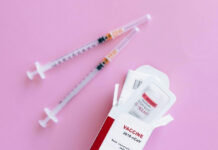OTTAWA – COVID-19 Update – The Public Health Agency of Canada (PHAC) continues to monitor COVID-19 epidemiological indicators to quickly detect, understand and communicate emerging issues of concern. The following is a brief summary of the latest national trends.
For additional COVID-19 data and analyses, the PHAC posts the following reports:
- COVID-19 Data Trends and Reports, including links to COVIDTrends, a local activity look up tool; past modelling reports; latest national epidemiological reports, and links to provincial/territorial reporting sites.
- Weekly COVID-19 Epidemiological Update
- COVID-19 Wastewater Surveillance Dashboard
- COVID-19 Vaccine Coverage Data
- Reported Side Effects Following COVID-19 Vaccination in Canada
COVID-19 disease activity in Canada is showing early signs of stabilisation at the national level, but disease activity indicators (case incidence, laboratory test positivity, wastewater signals) and severity trends (hospitalisations) are variable regionally. Similar to previous waves, lagging severity indicators are slower to decline, but are expected to stabilize and decline following infection rates.
As we expect the SARS-CoV-2 virus to continue evolving, PHAC continues to closely monitor circulating viruses across Canada and globally. Currently, Omicron BA.5 sub-lineages are predominant in Canada and are currently driving cases.
Because the Omicron variant, including sub-lineages are immune evasive, two doses of COVID-19 vaccines offer less protection than against previous variants. As such, keeping up-to-date with COVID-19 vaccines, including booster doses, continues to be very important for reducing the risk of hospitalisation and death due to COVID-19. Over the past 30 days, preliminary estimates for some severity trends have exceeded average rates seen previously throughout the pandemic. In particular, in the past 30 days preliminary estimates for hospitalisation rates exceeded the pandemic average for older adults, aged 80 years or older and for young children aged under 5 years. This again underscores the importance of keeping vaccinations up-to-date to reduce the risk of serious illness and hospitalisation due to COVID-19.
The latest available on cases following vaccination between June 6, 2022 and July 03, 2022, when Omicron variant activity continued to predominate, indicate that people vaccinated with a complete primary series plus one or more additional dose(s) of COVID-19 vaccines had an approximately five times lower hospitalisation rate and likewise a five times lower mortality rate, compared to unvaccinated people.
COVID-19 modelling studies published recently in the Canada Communicable Disease Report show that without Canadians’ collective efforts in achieving high vaccine coverage and adhering to public health measures, Canada could have experienced an estimated up to: 34 million cases, 2 million hospitalisations and 800,000 deaths as of April 2022. Specifically, this Public Health Agency of Canada modelling study explores what could have happened (counterfactuals modelling) without the combined effects of vaccination and public health measures to reduce COVID-19 spread and severity in Canada. Moreover, consistent with a recent review of Canada’s response to the COVID-19 pandemic, these modelling results illustrate that while the pandemic has had a major impact, control of COVID-19 has been relatively successful in Canada as compared to outcomes in other countries and the counterfactual modelling scenarios.
By taking a vaccines plus approach, including the use of stringent public health measures and achieving very high vaccination coverage, people in Canada have helped protect each other, while averting potentially catastrophic morbidity and mortality impacts of COVID-19. This provides assurance that for the remainder of the summer and heading into the fall, our best advantage is to continue to be vigilant with personal protective habits, while we maintain a state of readiness and prepare our surge capacity for ongoing and future response.
At the individual level, readiness can be best achieved by keeping COVID-19 vaccinations up-to-date, including getting booster doses as recommended, to be better protected against serious illness and other complications of COVID-19 infection, including post COVID-19 condition (also known as long COVID). At the same time, continuing to follow public health advice tailored to local epidemiology and circumstances can help guide your individual and family risk assessment and use of personal protective practices to reduce your risk of exposure and spreading the virus. In particular, properly wearing a well-fitted and well-constructed face mask, avoiding crowding, and getting the best ventilation possible in indoor spaces, are layers of protection that can reduce your risk in all settings. As always, staying home and away from others when you test positive using a rapid test, or are sick or experiencing any COVID-like symptoms, even if mild, is advised to reduce of the risk of spreading the virus.
We can also stay healthier by getting up-to-date with other recommended vaccines and routine vaccines for children and adults. For additional information regarding vaccination in your area, reach out to your local public health authorities, healthcare provider, or other trusted and credible sources, such as Immunize.ca and Canada.ca, which includes information to help Canadians understand the benefits of being vaccinated against COVID-19.
Canadians can also go the extra mile by sharing credible information on COVID-19 risks and prevention practices and measures to reduce COVID-19 in communities. Read my backgrounder to access more COVID-19 Information and Resources on ways to reduce the risks and protect yourself and others, including information on COVID-19 vaccination.
SOURCE Public Health Agency of Canada







